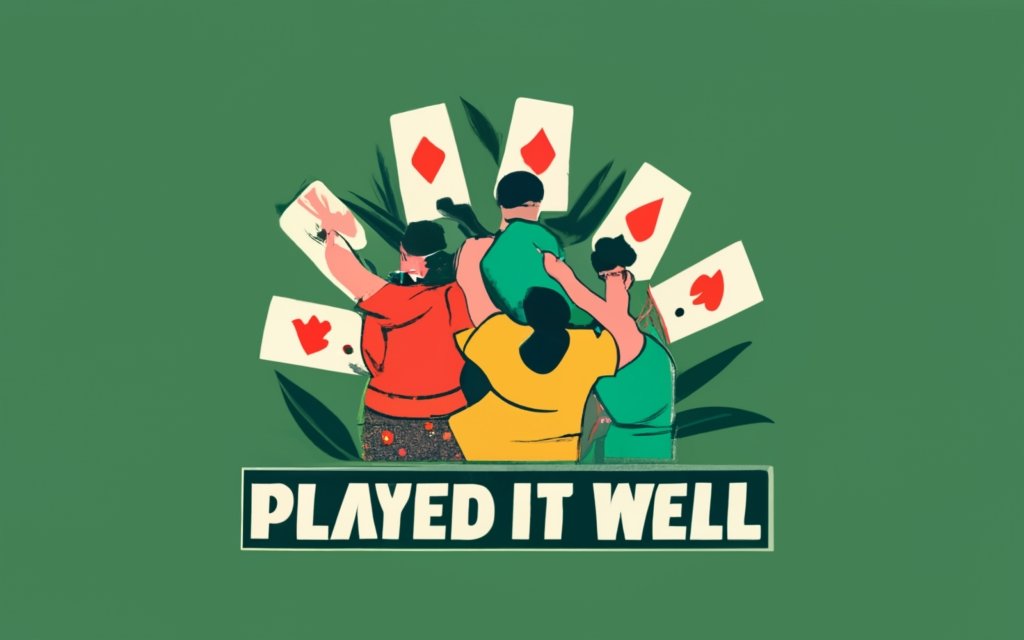Looking for some fun and engaging board games that are perfect for just two players? Look no further! In this article, we will be presenting a list of the top 10 board games specifically designed for two players. Whether you’re looking for a strategic challenge or a casual game night, we’ve got you covered. From classic to modern and everything in between, these board games are guaranteed to provide hours of entertainment for you and your gaming partner. So grab a friend and get ready to embark on epic battles, solve mind-bending puzzles, and test your strategic skills with these fantastic two-player board games.
Chess
Overview
Chess is a timeless and classic board game that has been enjoyed by players of all ages for centuries. It is a game of strategy and intellect that requires players to strategize their moves and anticipate their opponent’s next move. The objective of the game is to checkmate your opponent’s king, which means putting the king in a position where it is under attack and cannot escape capture.
Gameplay
The game is played on a square board divided into 64 squares of alternating colors. Each player starts with 16 chess pieces, including a king, a queen, two rooks, two knights, two bishops, and eight pawns. The pieces are placed on the board in specific positions. The players take turns moving their pieces, with each piece having its unique set of movements. The ultimate goal is to strategically maneuver your pieces to capture your opponent’s pieces, create threats, and ultimately checkmate their king.
Strategy
Chess is undoubtedly a game that requires careful planning and strategic decision-making. It is crucial to understand the strengths and weaknesses of each piece and utilize them effectively. Planning ahead by assessing your opponent’s moves and anticipating their strategy is essential. It is also crucial to protect your king by developing a solid defense and avoiding unnecessary risks. Successful players often use tactics like forks, pins, and sacrifices to gain an advantage over their opponents. Mastering various opening moves and studying classic chess games can greatly enhance your strategic thinking and overall gameplay.
Scrabble
Overview
Scrabble is a popular word game that challenges players’ vocabulary and word-building skills. It can be an exciting and educational game that encourages creativity and strategic thinking. The objective of Scrabble is to score the highest number of points by forming words on the game board using letter tiles.
Gameplay
The game is played on a square board with a grid of cells that can hold letter tiles. Each player starts with a rack of seven letter tiles, which they can use to form words on the board. Players take turns to place their tiles on the board, connecting them to existing words to create new words or intersecting letters. The tiles have different point values, and the score is determined by adding up the value of each letter in the formed word. Bonus points can be earned by placing tiles on special scoring squares on the board.
Tactics
Scrabble requires players to think strategically while considering the available letters and the potential words they can form. It is essential to utilize the space on the board effectively, looking for opportunities to create high-scoring words and block your opponent’s potential moves. Managing your letter tiles and planning ahead is crucial to maximize your scoring potential. Experienced players often aim to play offensively by building longer words or defensively by blocking their opponent’s access to high-scoring squares. Additionally, developing a wide vocabulary and familiarizing yourself with commonly used words can significantly improve your tactical skills in Scrabble.

This image is property of images.pexels.com.
Battleship
Overview
Battleship is a thrilling and strategic board game that simulates naval combat. It challenges players to sink the enemy’s fleet while protecting their own ships. The game relies on deduction and tactical thinking to outmaneuver your opponent and secure victory.
Gameplay
The game is played on two grids, each representing the player’s fleet. Players take turns guessing the coordinates of their opponent’s ships on the opposing grid. The grid is divided into squares designated by numbers and letters. Players mark their guesses as hits or misses, trying to deduce the locations of the opponent’s ships. The first player to sink all of their opponent’s ships wins the game.
Tactics
Battleship requires players to think strategically and make educated guesses to locate their opponent’s ships. Analyzing the pattern of your opponent’s hits and misses can help deduce the possible positions of their ships. Players often employ tactics like spreading their own ships across the board to make it harder for their opponent to find them or concentrating their attacks on specific areas to increase their chances of hitting a ship. Additionally, bluffing and misleading your opponent by intentionally missing can throw them off and give you an advantage. Adaptability and quick thinking are crucial to success in Battleship.
Carcassonne
Overview
Carcassonne is a tile-based board game that challenges players to build a medieval landscape by strategically placing tiles and claiming areas. It is a game that combines strategy, luck, and decision-making in a unique and engaging way.
Gameplay
The game starts with a single tile placed in the center of the playing area. Players take turns drawing new tiles and placing them adjacent to existing tiles, creating a sprawling landscape. Each tile depicts various terrains like cities, roads, fields, and monasteries. Players can choose to place their “meeples,” small wooden figures, on different features of the tiles to claim them. Points are earned by completing cities, roads, and other features, and at the end of the game, the player with the highest score wins.
Strategy
Carcassonne offers multiple strategic possibilities. Players must decide when to place their meeples and which areas to claim. Timing is crucial, as placing a meeple too early may leave it locked in an unfinished feature, while placing it too late may result in missing out on valuable points. Players can employ various tactics, such as strategically connecting multiple features to increase point potential, blocking opponents’ expansions, or focusing on completing smaller features for faster scoring. Adapting to the landscape and the opponents’ moves is key to success in Carcassonne.

This image is property of images.pexels.com.
Ticket to Ride
Overview
Ticket to Ride is a popular board game that combines strategy, planning, and a little bit of luck. The game revolves around building train routes across the country, connecting cities, and completing destinations.
Gameplay
Players start with a set of train cards and destination tickets. The game board depicts a map with various cities connected by colored train routes. On their turn, players can either draw train cards, claim a route by using the matching train cards, or draw destination tickets. Destination tickets represent specific routes that players need to complete for additional points. The ultimate goal is to score the highest number of points by completing routes and fulfilling destination tickets.
Strategy
Ticket to Ride requires players to plan and strategize their routes efficiently. Choosing the right destination tickets and connecting cities in a logical and strategic way is crucial. Players must consider the availability of train cards and routes, making sure they have the necessary resources to claim their preferred routes. Additionally, balancing short and long routes can be a key strategy, as longer ones yield more points but take time to complete. The game also incorporates a level of risk-taking, as players can block their opponents’ routes or strategically claim routes to disrupt their plans. Adapting your strategy based on the ever-changing board and opponents’ moves is essential for success in Ticket to Ride.
Pandemic
Overview
Pandemic is a unique cooperative board game where players work together to save the world from deadly diseases. It offers a thrilling and engaging experience that tests players’ teamwork, strategy, and decision-making skills.
Gameplay
In Pandemic, players take on the roles of specialized experts who must collaborate to control and ultimately cure four deadly diseases spreading across the globe. Each player has unique abilities that contribute to the team’s efforts. On their turn, players can move around the globe, treat and contain diseases, share knowledge, and develop strategies to prevent outbreaks. The game is won when all four diseases are cured, but it is lost if the diseases spread uncontrollably or other conditions are not met.
Cooperative Play
Pandemic stands out from traditional board games as it requires players to work together towards a common goal. Communication and collaboration are vital for success. The game emphasizes the importance of each player’s role and encourages discussion and sharing of information and strategies. Coordination and strategic planning are necessary to efficiently allocate resources and prioritize actions. Players must also adapt to the changing situation and anticipate potential outbreaks and epidemics. Pandemic provides a unique and rewarding cooperative gaming experience that fosters team spirit and shared decision-making.

This image is property of images.pexels.com.
7 Wonders Duel
Overview
7 Wonders Duel is a two-player adaptation of the popular board game 7 Wonders. It condenses the empire-building theme into a thrilling head-to-head competition. The game requires players to carefully manage resources, construct magnificent structures, and outmaneuver their opponent to victory.
Gameplay
The game is played over three ages, each representing a different era of civilization. Players take turns selecting and playing cards from a central tableau, constructing buildings, and utilizing their effects. The cards represent various structures, resources, and actions. The objective is to score the most victory points by constructing valuable buildings, winning military conflicts, advancing in science, and fulfilling specific conditions. The game ends at the end of the third age, and the player with the most victory points wins.
Development Cards
7 Wonders Duel introduces the concept of development cards that can provide unique advantages and shape the game’s course. Some cards allow players to take additional actions, gain special abilities, or hinder their opponent’s progress. Careful planning and strategic decision-making are necessary when selecting cards from the tableau, as each choice can have significant consequences. Players must study their opponent’s moves and adapt their strategy accordingly to maintain a competitive edge.
Dominion
Overview
Dominion is a deck-building card game where players assume the role of monarchs aiming to expand their kingdom and accumulate the most victory points. It offers a unique and engaging gameplay experience centered around constructing a customized deck of cards.
Gameplay
The game starts with each player having an identical deck of basic cards. On their turn, players can perform actions, gain additional cards, and potentially purchase more powerful cards from a communal supply. The purchased cards are added to the player’s deck, which is then shuffled and used in subsequent turns. The goal is to craft a deck with efficient card combinations that generate resources, provide actions, and earn victory points. The game ends when a specific depletion condition is met, and the player with the most victory points wins.
Deck-building
Dominion stands out for its deck-building mechanic, where players create and refine their decks throughout the game. Strategic decision-making is crucial in selecting the most suitable cards from the supply to improve a player’s deck’s overall efficiency. Balancing between acquiring victory point cards and cards that provide necessary resources and actions is key. Players must anticipate the opponents’ strategies, adapt to the changing game dynamics, and optimize their deck to maximize their chances of victory. Building a deck that synergizes well and capitalizes on available opportunities is a core aspect of Dominion’s gameplay.

Hive
Overview
Hive is a highly strategic and portable board game played with beautifully designed hexagonal tiles. It is a two-player abstract game that combines elements of chess and strategy.
Gameplay
The game begins with players placing the hexagonal tiles on the table, strategically positioning each tile adjacent to one another, creating a hive. The tiles represent different insect pieces, each with its unique abilities and movements. Players take turns either placing a new tile or moving an existing tile, with the goal of surrounding the opponent’s queen bee and ensuring it is unable to move. The first player to accomplish this wins the game.
Tactics
Hive requires players to think several moves ahead and plan their actions carefully. The game encourages players to strategize their positioning and use the unique abilities of each piece effectively. Utilizing offensive tactics to trap the opponent’s queen bee while maintaining a strong defense is crucial. Players must consider how each piece interacts with others, such as the beetle piece stacking on top of other tiles or grasshoppers jumping over surrounding tiles. Being able to predict your opponent’s moves and adapting your strategies accordingly is key to success in Hive.
Azul
Overview
Azul is a visually stunning and captivating board game that revolves around the art of tile placement. It combines strategic planning and careful decision-making to create intricate patterns and score points along the way.
Gameplay
In Azul, players take turns selecting and placing colorful tiles onto their personal player board. The tiles come in different shapes and colors, and players must arrange them to create specific patterns depicted on their board. Unused tiles score negative points, while completed patterns or rows score positive points. The game progresses through several rounds, with players continuously selecting and placing tiles until the game’s end. The player with the highest score wins.
Tile Placement
Azul focuses on the tactical placement of tiles to maximize scoring potential. It involves considering the available tiles and anticipating future choices to create visually pleasing patterns and score valuable points. Deciding which pattern to prioritize and adapt to your opponents’ moves is essential. Careful planning is required to select the right tiles and complete the desired patterns without wasting resources or leaving unfavorable choices for other players. Azul’s elegant mechanics and visually appealing gameplay make it a compelling choice for any board game enthusiast.
In conclusion, these top ten board games for two players offer a diverse range of gameplay experiences. From the strategic battles of Chess and Scrabble’s intellectual wordplay to the cooperative challenges of Pandemic, each game brings its unique elements to the table. Whether you prefer intense one-on-one duels or collaborative problem-solving, these board games are bound to provide countless hours of entertainment for you and your partner. So gather your favorite opponent, set up the game board, and prepare for endless fun with these fantastic two-player board games.






